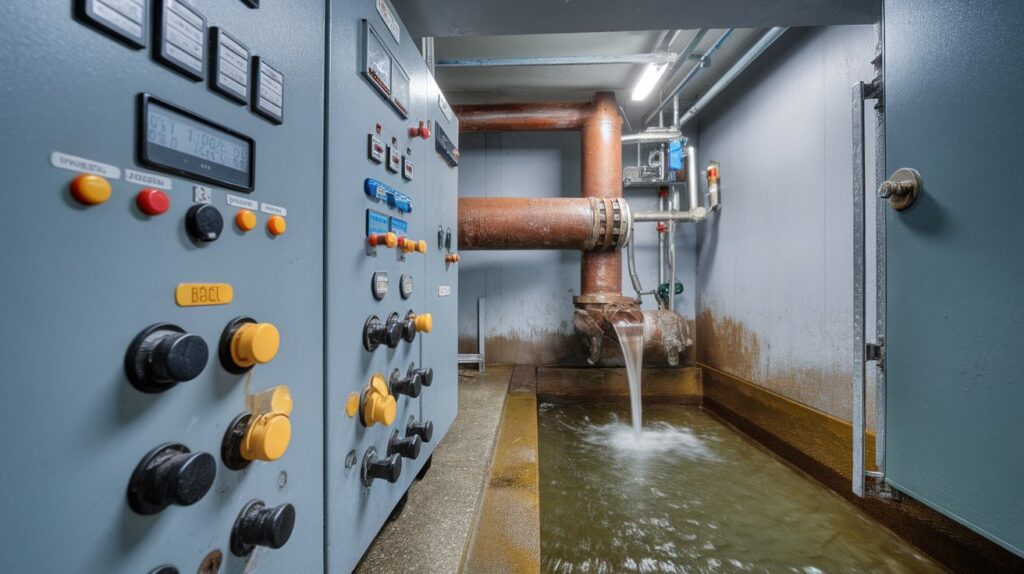Modern water infrastructure is at a crossroads. As cities expand, populations surge, and climate change intensifies, water utilities face unprecedented pressures to deliver safe, reliable, and sustainable water services. Traditional top-down management models—where a single authority dictates operations—are struggling to keep up with the complexity and scale of today’s water challenges. Enter a new paradigm: Peer-to-Peer Control. This innovative approach is quietly transforming how water systems are managed, offering a blueprint for resilience, collaboration, and smarter decision-making in the 21st century.
The Shift Toward Peer-to-Peer Models
For decades, water utilities operated in silos, each tackling their own issues with limited external input. But as the challenges have grown more interconnected—think shared watersheds, regional droughts, and aging infrastructure—so too has the need for collaboration. Peer-to-peer models break down these barriers, enabling utilities, agencies, and even entire nations to share knowledge, data, and best practices directly with one another.
Peer-to-Peer Control goes a step further. It’s not just about sharing ideas; it’s about distributed decision-making and collective action. In this model, water utilities and organizations act as nodes in a network, each with the autonomy to make local decisions but also the ability to coordinate with peers in real time. This creates a dynamic, flexible infrastructure where information and resources flow freely, and where innovation can scale rapidly across regions.
How Peer-to-Peer Control Works in Practice
Picture a network of water utilities across different cities—each facing unique local challenges but also sharing common goals. Through peer-to-peer engagement, these utilities can:
- Exchange operational data to optimize water use and reduce waste.
- Share successful technologies for energy conservation and water reuse.
- Collaborate on emergency responses during droughts or contamination events.
- Build operator capacity through training and site visits.
A real-world example is the WiSE U.S.–ASEAN water utility partnerships, where cities in Southeast Asia and the United States paired up to tackle shared water management challenges. These relationships, strengthened by in-person and virtual exchanges, allowed participants to co-create solutions, from advanced leak detection to new wastewater treatment methods.
The Role of Digital Infrastructure
The rise of digital tools has supercharged peer-to-peer approaches. Platforms like the Internet of Water Peer-to-Peer Network connect agencies nationwide, making it easier than ever to structure, manage, and share vast amounts of water data. With robust data infrastructure, utilities can overlay service boundaries with demographic information, track infrastructure upgrades, and plan for future needs with unprecedented precision.
This digital backbone enables real-time collaboration. For example, if a utility in one city detects a spike in contaminants, it can instantly alert neighboring utilities, enabling a coordinated response. Similarly, shared digital platforms streamline reporting requirements and support data-driven planning, making the entire system more agile and resilient.
Benefits of Peer-to-Peer Control for Water Infrastructure
1. Enhanced Resilience
Peer-to-peer collaboration allows utilities to pool resources and expertise, making them better equipped to handle shocks like droughts, floods, or infrastructure failures. By learning from each other’s successes—and mistakes—utilities can adapt faster and build more robust systems.
2. Cost-Effective Innovation
Joint investments in new technologies or shared facilities can be more cost-effective than going it alone. Multiple providers collaborating on infrastructure projects can finance, build, and operate shared assets, spreading risk and maximizing benefits.
3. Improved Governance
Peer-to-peer models promote transparency and shared accountability. Through structured exchanges, utilities can enhance governance frameworks, clarify roles and responsibilities, and integrate diverse stakeholders—from public agencies to private sector partners and NGOs.
4. Tailored Solutions
Every region has unique water challenges. Peer-to-peer networks enable the customization of solutions, drawing on a global pool of expertise while adapting to local conditions. This flexibility is crucial for addressing everything from climate risk adaptation to economic sustainability.
5. Accelerated Learning and Capacity Building
Inter-basin training and structured exchanges help build institutional capacity, ensuring that new knowledge and skills are disseminated quickly across the network. This continuous learning loop drives ongoing improvement and innovation.
Challenges and Considerations
While the promise of peer-to-peer control is compelling, implementing it at scale is not without hurdles:
- Data Integration: Harmonizing data from multiple sources requires standardized formats and strong cybersecurity measures.
- Institutional Complexity: Different utilities may have varying legal frameworks, priorities, and risk tolerances, making coordination complex.
- Equity and Access: Ensuring that smaller or under-resourced utilities can participate fully in peer-to-peer networks is essential for system-wide resilience.
- Indirect Impacts: Collaborative investments can have ripple effects, sometimes reducing water availability for non-partner providers. Careful modeling and stakeholder engagement are needed to balance these tradeoffs.
The Future: Toward a Global Water Network
The vision for peer-to-peer control extends beyond local or national boundaries. International initiatives, such as the Twin Basin Initiative, are fostering sustainable partnerships among basin organizations worldwide, from Sub-Saharan Africa to Southeast Asia and the Americas. These programs promote integrated water resource management, knowledge sharing, and the co-creation of innovative solutions for both local and global challenges.
As water scarcity and climate volatility intensify, the ability to act collectively—while retaining local autonomy—will be a defining feature of resilient water systems. Peer-to-peer control is not just a technical fix; it’s a cultural shift toward openness, collaboration, and shared stewardship of our most vital resource.
Conclusion
Peer-to-peer control is redefining what’s possible in modern water infrastructure. By empowering utilities and agencies to work together as equals, share data, and co-create solutions, this approach offers a path to greater resilience, efficiency, and sustainability. The journey is ongoing, but the early results are clear: when water managers connect as peers, the whole system becomes stronger, smarter, and better prepared for the challenges ahead.


